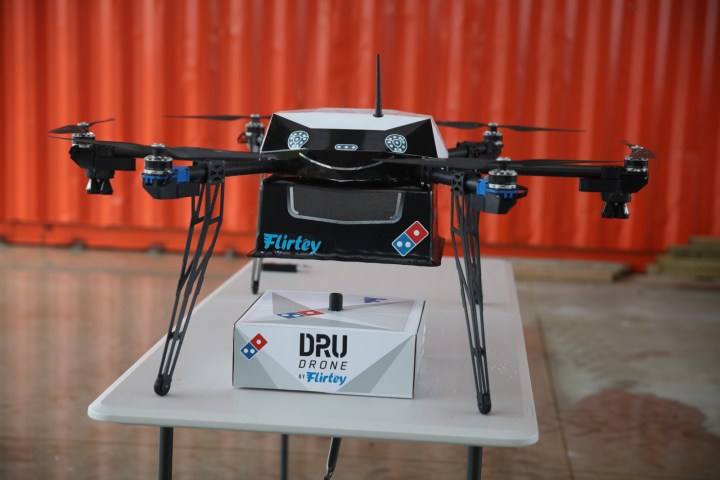
Well, it certainly seems that way, and let’s face it, if anything needs to be delivered in super-quick time, it’s pizza. So Domino’s – in New Zealand – is on the case.
Working with Nevada-based drone delivery specialist Flirtey, Domino’s ran a test flight on the outskirts of Auckland on Thursday, successfully demonstrating a delivery system where the flying machine lowers the pizza – inside a box, obviously – to the ground via a winch.
In a bid to show just how serious it is about its plan to offer pizza deliveries by drone, Domino’s invited to the demonstration a representative from the country’s civil aviation authority as well as transport minister Simon Bridges. And they both turned up.
The delivery marked the final step in Flirtey’s approval process for Domino’s delivery plan, with flights to customer homes expected to launch later this year from a select New Zealand store … except that it does still have to be green-lighted by the authorities.
“With the increased number of deliveries we make each year, we were faced with the challenge of ensuring our delivery times continue to decrease and that we strive to offer our customers new and progressive ways of ordering from us,” said Don Meij of Domino’s Pizza Australia. Hang on, that name rings a bell. Ah yes, he’s the fella behind DRU, the diminutive delivery droid that the company also wants to use to deliver its food.
Despite the delivery drone still needing regulatory approval, Meij insists the the ambitious plan “isn’t a pie-in-the-sky idea.” Yes, he really said that. The pizza boss added that the strategy is as authentic as the cheese that tops the company’s pizzas, and that he’s determined to “make this a reality for our customers.”
Editors' Recommendations
- It’s drone delivery, but not as we know it
- Air New Zealand reveals cost of its comfy sleep pods
- Amazon shows off new delivery drone ahead of trial service
- Drone delivery from this new location makes perfect sense
- Drone-delivery specialist Wing lifts lid on its unique aircraft


